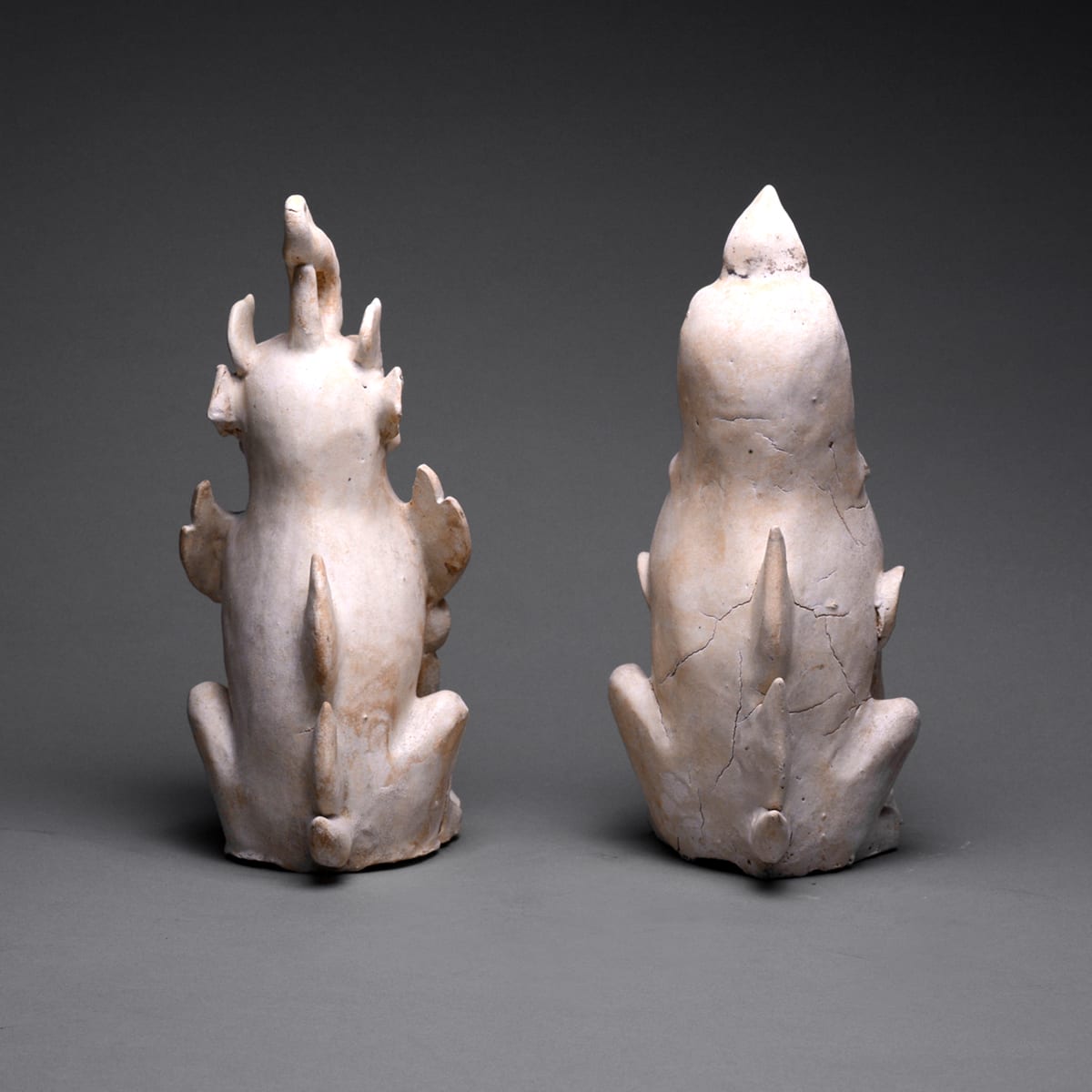Pair of Sui Glazed and Painted Terracotta Spirit Guardians, 581 CE - 618 CE
Glazed Terracotta
height 26.7 cm
height 10 1/2 in
height 10 1/2 in
H.948
Further images
After almost four hundred years of civil war and division, Yang Jian succeeded in reunifying north and south under one authority, the Sui Dynasty. However, despite its brief duration, lasting...
After almost four hundred years of civil war and division, Yang Jian succeeded in reunifying north and south under one authority, the Sui Dynasty. However, despite its brief duration, lasting for the rule of only two emperors, the Sui Dynasty paved the way for the cultural renaissance that would arise during the T’ang Dynasty. Reforms were introduced to wrest power out of the hands of the aristocracy, military, and Buddhist communities. The Confucianist system of selecting government officials from state schools, by means of rigorous examinations, was initiated. Perhaps their most significant program was the construction of the Great Canal, a project that facilitated the movement of people and goods across great distances, aiding in the reunification of China. However, the cost of the Canal bankrupted the empire and ultimately led to its dissolution, coupled with a failed campaign to conquer Korea. The rulers of the T’ang would capitalize on the infrastructure improvements of the Sui and establish one of the greatest empires in the history of China, following the footsteps of the Sui.
Originating during the Six Dynasties period (222-589 A.D.), these types of figures are known as spirit guardians, for originally, a pair of such figures always stood guard at the tombs of Chinese rulers. Traditionally, both figures are mythological composite creatures, one always an amalgamation of various animals while the other a combination of human and animal traits. These guardians are a general type of Chinese art known as mingqi. Mingqi were any variety of objects specifically created for interment in the tombs of elite individuals in order to provide for their afterlife. These guardians were most likely interred in order to ward off potential tomb robbers or evil spirits in the next world that might try to infiltrate the tomb. This pair of spirit guardians have been decorated with an elegant crème glaze and then highlighted with red and black pigments. Both appear to have the bodies and hoofed legs of horses while one bears a human visage and the other, the fanged head of a dragon. A large spiraling horn emerges from the head of the composite dragon beast in between his ears. Black stripes along their legs enhance the animal nature of these creatures. This pair, although intending to repel us, instead attracts our gaze with their reserved, yet charming, decorations.
Originating during the Six Dynasties period (222-589 A.D.), these types of figures are known as spirit guardians, for originally, a pair of such figures always stood guard at the tombs of Chinese rulers. Traditionally, both figures are mythological composite creatures, one always an amalgamation of various animals while the other a combination of human and animal traits. These guardians are a general type of Chinese art known as mingqi. Mingqi were any variety of objects specifically created for interment in the tombs of elite individuals in order to provide for their afterlife. These guardians were most likely interred in order to ward off potential tomb robbers or evil spirits in the next world that might try to infiltrate the tomb. This pair of spirit guardians have been decorated with an elegant crème glaze and then highlighted with red and black pigments. Both appear to have the bodies and hoofed legs of horses while one bears a human visage and the other, the fanged head of a dragon. A large spiraling horn emerges from the head of the composite dragon beast in between his ears. Black stripes along their legs enhance the animal nature of these creatures. This pair, although intending to repel us, instead attracts our gaze with their reserved, yet charming, decorations.





